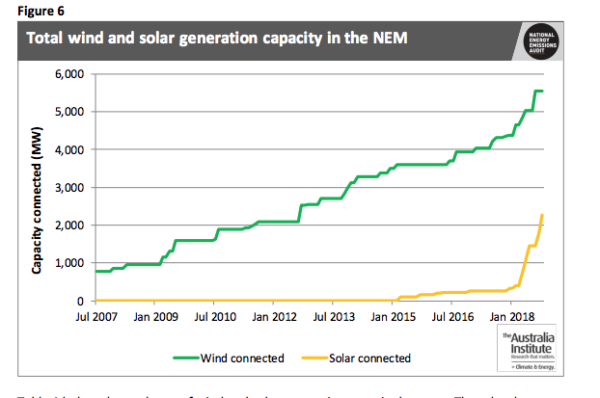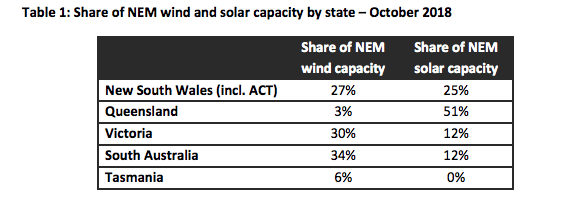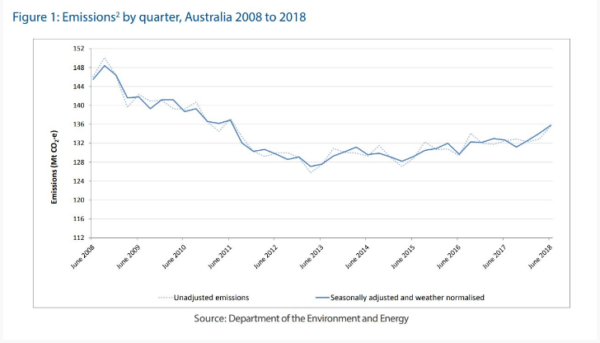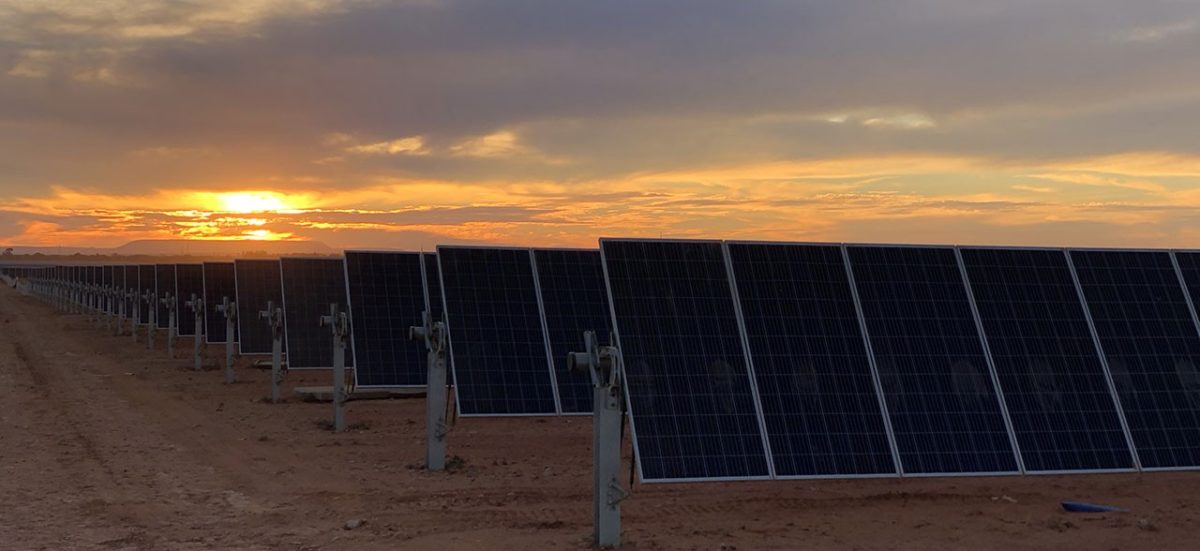While the Federal Government may insist Australia is on track to meet its Paris commitment, a number of studies, including the government’s own figures show exactly the opposite.
Meanwhile, renewables are doing their share. According to The Australia Institute, in each of the past five months total annual renewable generation in the National Energy Market (NEM) has reached a new record level, in terms of both total generation and share of generation. Since the beginning of the year, it is up by over 20%.
In the year to October, grid connected renewables supplied 16.5% of total electricity, of which wind and solar supplied 8.2% and hydro 8.3%, finds the latest National Energy Emissions Audit,
If the nation’s rooftop solar fleet is also included, the renewable share goes up to 19.9%, the think-tank notes in the report.
Solar additions were particularly dominant. Four solar farms, one each in Queensland, New South Wales, Victoria, and South Australia, started supplying into the NEM grid during October. These are: White Rock, 20 MW in New South Wales; Daydream, 180 MW in Queensland; Bungala Two, 140 MW in South Australia; and Karadoc South, 112 MW in Victoria.
This new solar capacity is in addition to the four utility scale arrays added in September, placing the total installed capacity of solar farms suppling the NEM at nearly 2.3 GW at the end of October – up from 270 MW just a year ago.

On a state level, the total renewable share of generation was 93.4% in Tasmania, in South Australia it was 50.2%, in Victoria 19.5%, in New South Wales 12.5%, and in Queensland 7.0%. The share of NEM wind and solar capacity by state can be seen in the table below.

“Renewable energy generation records continue to be broken and the level of renewables on the grid continues to rise. It is clear we can only expect more to come,” says Hugh Saddler, energy expert and author of the report.
“If the Government truly wants more reliable energy and lower power prices, they should look up not down.
“The future is in renewables. Australia just witnessed eight large-scale solar plants coming online in the last two months, increasing solar capacity connected to the NEM grid by over 50%. Unless taxpayers foot the hefty bill, it is unlikely we will see any new coal power plants being built again.”
Galloping emissions & alternative interpretations
But, while growing renewable generation is certainly lowering greenhouse gas emissions, it appears that much more needs to be done to put Australia’s carbon emissions on a downward trajectory.
Following hot on the heels of a United Nations report warning Australia is not on track to meet Paris carbon emissions reduction target of 26-28% on 2005 levels, the Federal government has released figures that add further evidence on this.
The latest Quarterly Update of Australia’s National Greenhouse Gas Inventory shows a 1.3% increase on the previous quarter.
Furthermore, emissions for the year ending in June 2018 have increased on the previous year by 0.6%, pushing Australia’s emissions to their highest since June 2011.

The report lays fugitive emissions at the door of increased LNG production for export, as well as higher emissions from transport and other sectors.
Namely, emissions from the production, processing, transport, storage, transmission and distribution of fossil fuels such as coal, crude oil and natural gas increased by 5.2% over the year to June 2018, driven by a 14.2% increase in natural gas production and 0.2% increase in coal production.
In the transport sector, emissions increased 2.6% over the year on the back of a 7.6% annual growth in diesel consumption.
But, despite all the evidence, Environment Minister Melissa Price offered a different interpretation, claiming Australia is on track to meet its Paris goal.
“The latest report shows Australia’s national emissions, which comprise 1.3% of global emissions, were 2.4% below 2000 levels and 11.7% below 2005 levels in the year to June 2018,“ Price said in a statement released today.
“Our Paris commitment requires Australia to be 26-28% below 2005 levels, and this demonstrates solid progress to meeting that target in 2030.“
This and similar accounts fly in the face of statistics and science that Australian school kids, as seen on Friday, know much about.
This content is protected by copyright and may not be reused. If you want to cooperate with us and would like to reuse some of our content, please contact: editors@pv-magazine.com.









By submitting this form you agree to pv magazine using your data for the purposes of publishing your comment.
Your personal data will only be disclosed or otherwise transmitted to third parties for the purposes of spam filtering or if this is necessary for technical maintenance of the website. Any other transfer to third parties will not take place unless this is justified on the basis of applicable data protection regulations or if pv magazine is legally obliged to do so.
You may revoke this consent at any time with effect for the future, in which case your personal data will be deleted immediately. Otherwise, your data will be deleted if pv magazine has processed your request or the purpose of data storage is fulfilled.
Further information on data privacy can be found in our Data Protection Policy.